For 70 years, XPCC has been protecting border, developing cities and industry, greening environment

Editor's note: This year marks the 70th anniversary of the Xinjiang Production and Construction Corps. China Daily reports on the achievements of the XPCC in agriculture, industry and ecology over the past seven decades.
Jin Maofang, 91, remembers driving a tractor during the severe winter of 1954 to farm desert land near Shihezi in the Xinjiang Uygur autonomous region.
With the temperature minus at 40 C, the tractor suddenly stalled, and Jin used her mouth to suck out solidified pieces of diesel clogging a pipe until the engine restarted. However, her lips stuck to the freezing pipe. When she tried to pull away, the skin on her lips peeled off and she bled profusely.
Jin, then a young woman from Shandong province, had volunteered to work in Xinjiang, despite its harsh environment.
READ MORE: Policy to boost cotton industry in Xinjiang
She and her co-workers rose at dawn every day. They ate dry rations for their meals and slaked their thirst with canal water. At night, they slept under the stars and covered their skin with mud in an attempt to prevent mosquito bites.
They once set a record by planting eight hectares of land in a single day.
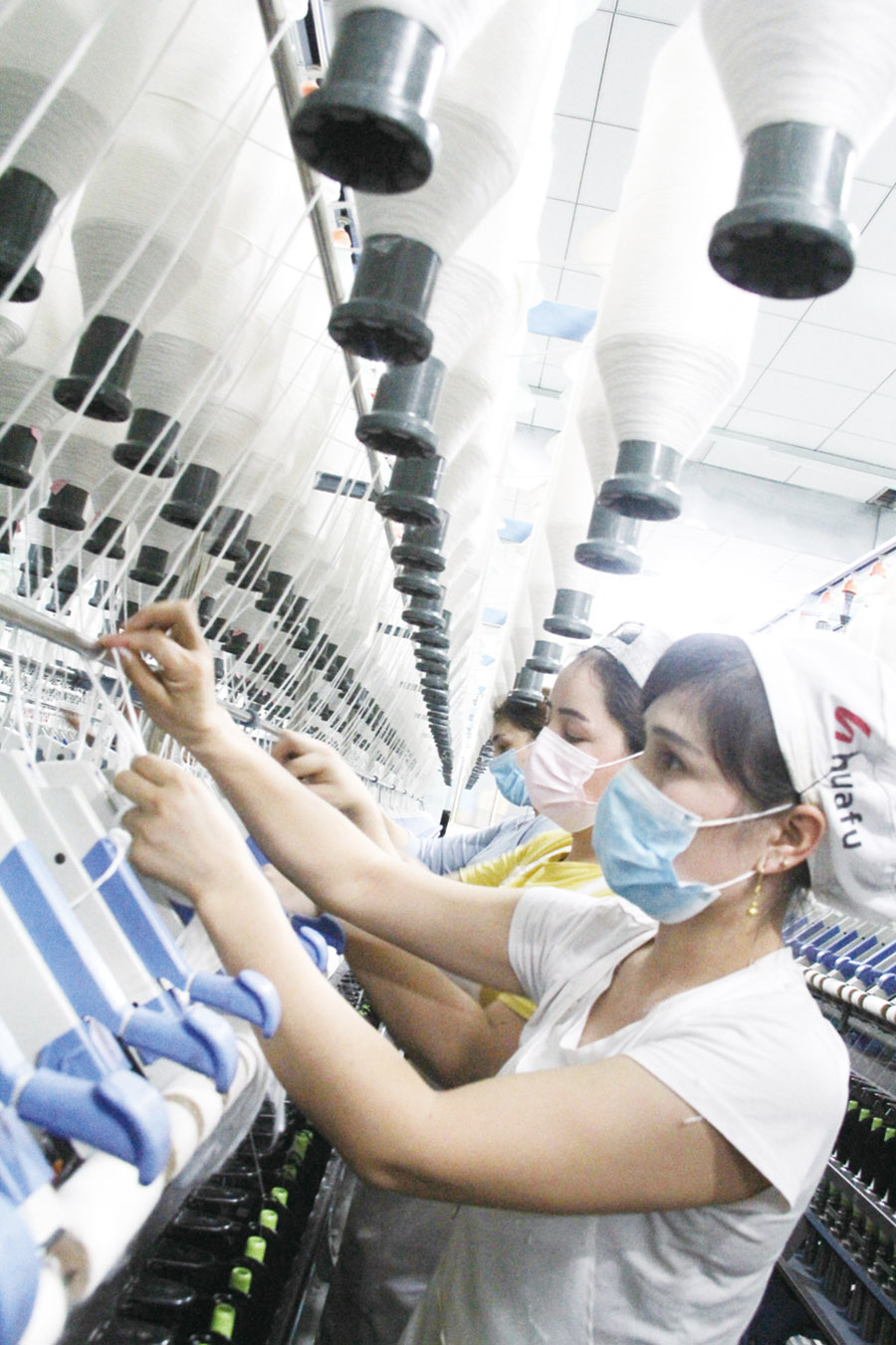
Despite the hardships, Jin uses lines of poetry to describe her affection for Shihezi today. Back then, all she could see was the vast Gobi Desert, sparse clusters of reeds, and sand swirling in the wind.
"I have been to many places, but this city is the youngest. It is so beautiful that one falls in love with it at first sight," she said.
The vision of Jin smiling broadly while sitting on her tractor was turned into a city statue. Images of the "female tractor driver", with Jin as one of the prototypes, were printed on the 1-yuan ($0.14) banknote of the country's third set of renminbi.
After the founding of the People's Republic of China, following the peaceful liberation of Xinjiang on Sept 25, 1949, People's Liberation Army soldiers — in response to a national call — laid down their weapons and picked up hoes to embark on a new mission.
In 1954, the Xinjiang Production and Construction Corps was established as a special provincial-level unit directly under the central government. Nearly 200,000 people from all over the country joined in the construction work, in what was seen as a milestone for both national security and rural development.
The XPCC settled in the Gobi Desert and areas close to the border. They started from scratch, transforming the harsh environment into oases, and building modern cities and industrial parks in the desert.

Fertile land
One of the major tasks of the corps was to develop agriculture. The results have been remarkable.
In 2023, areas administered by the XPCC produced 4.059 million metric tons of food. With only 0.39 percent of the national planting area to farm, they achieved a food production increase of 906,000 tons last year, accounting for 10.2 percent of the national increase, according to local authorities.
Located at the edge of desert, the land is dry and there are scarce rains — not ideal conditions for growing. However, the XPCC has set national records for the highest per-acre yields of winter wheat, spring wheat, and spring soybeans.
How so? For one thing, it is a pioneer in water-saving planting technology.
At a cotton-planting base in Shihezi, countless fluffy buds adorn the branches, resembling an endless sea of white when viewed from afar.
However, not a single water channel is visible. "Large-diameter water pipes are shallowly buried underground, replacing traditional channels. It prevents water leakage and evaporation, achieving a water-saving rate of over 10 percent and improving water transmission efficiency," said Ma Zhandong, senior engineer of the Xinjiang Tianye (Group) Co, which developed the technology.
The drip irrigation method is now used on more than 40 types of crops nationwide and covers an area exceeding 66,667 square kilometers. It has also been exported to 18 countries and regions, Ma said.
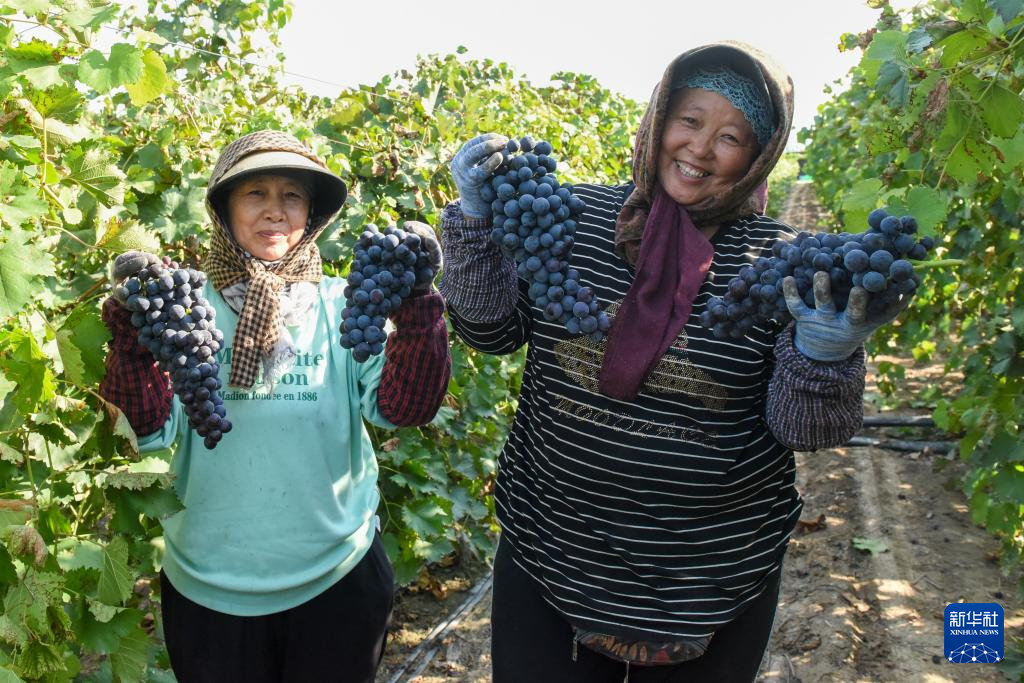
In July, Qitai Farm in Qitai county, Changji Hui autonomous prefecture, known as the "grain barn" of the XPCC, again set a new record for winter wheat yield in Xinjiang, producing an average yield of 873.2 kilograms per mu (0.067 hectares).
The China-developed "Xindong 52" winter wheat variety planted at the farm has strong tolerance to cold and drought.
"It shows significant advantages in terms of the number of wheat ears and grains, and still has the potential for further yield increase," said Zhan Yong, director of the crop research institute of the Xinjiang Academy of Agricultural and Reclamation Science.
In 2023, the average wheat yield per mu of the XPCC was 466.1 kilograms, and the average corn yield per mu was 782.6 kilograms, which both significantly exceeded the national averages.
The XPCC has also taken the lead in establishing a national agricultural water-saving irrigation demonstration base, an agricultural mechanization promotion base, and a modern agricultural demonstration base.
The mature and efficient agricultural production conditions have been the foundation for the corps to continuously improve grain yields in recent years, said Hu Jianguo, chief agronomist of the XPCC's agriculture and rural affairs bureau.
The mechanization rate for crop cultivation and harvesting has reached 95.5 percent, and the water-saving coverage rate is at 94.8 percent, Hu added.
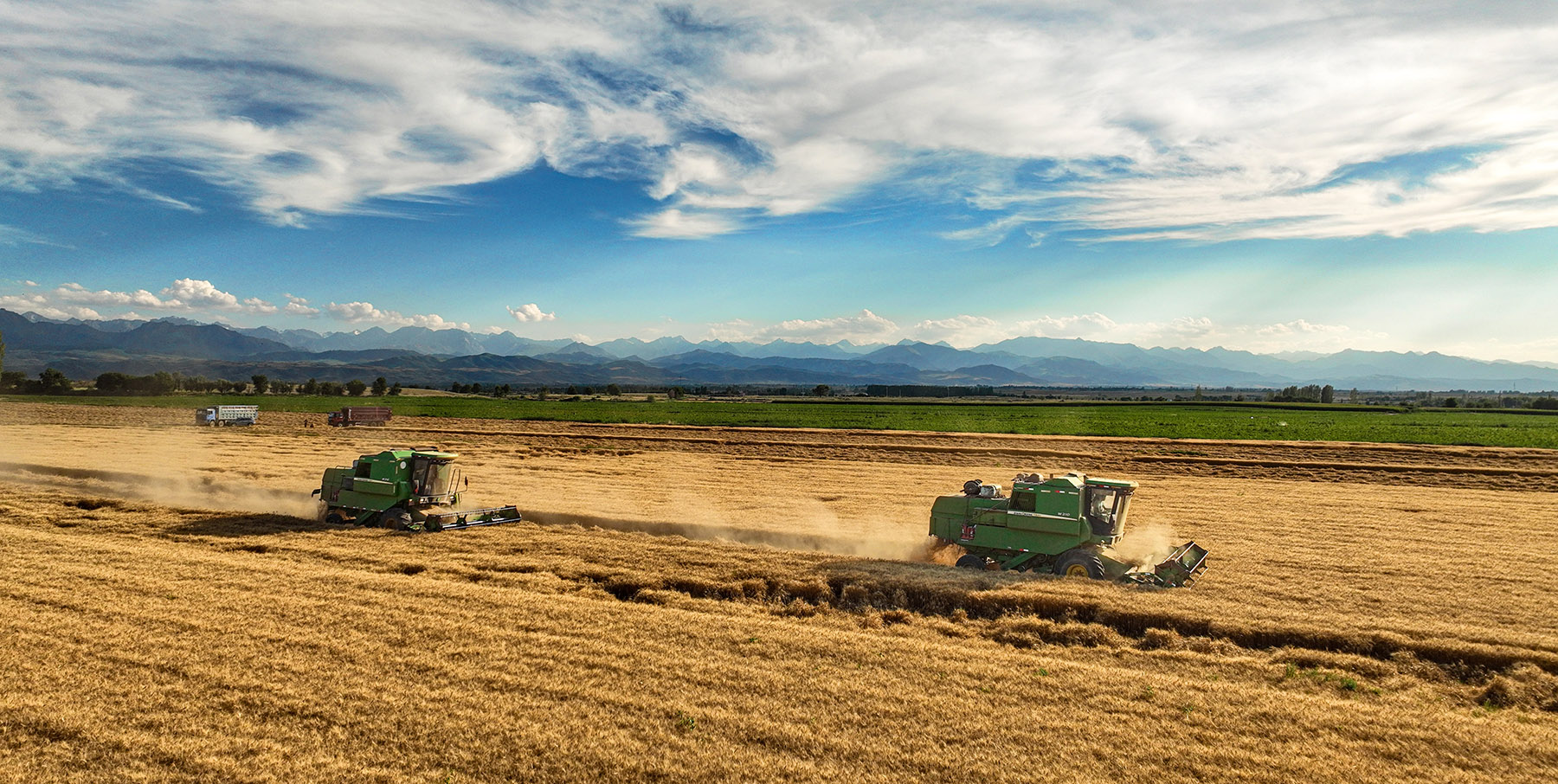
Starting from scratch
The corps has built a number of large and medium-sized enterprises to lay the foundation for the industrial development of Xinjiang.
In the winter of 1956, the XPCC's plan to establish a sugar factory in Shihezi was approved.
As one of the initiators of the factory, Li Tingzhi remembered all his comrades were asked whether they wanted to use their military severance pay to build a sugar factory, and they all agreed to the proposition.
When building key facilities for the plant, such as crystallization tanks, evaporation tanks and leaching tanks, steel plates needed to be pressed into curved shapes.
Due to the lack of a rolling machine, XPCC members had to hammer the steel plates by hand. The surface temperature of the heated steel plates reached up to 800 C and many members of the corps suffered nose bleeds and facial burns.
After more than a year of hard work, the first large-scale modern sugar factory in northwestern China, the Bayi Sugar Factory, was completed and put into operation on Dec 7, 1959. At the time, the factory set an industry record for the speed and size of the construction work.
Other industrial achievements in the region quickly followed.
On July 20, 1960, the first glossy paper produced by the Bayi Paper Mill in Xinjiang was produced; on Aug 1, 1960, the second-largest cotton textile enterprise, the Bayi Cotton Textile Factory, was completed and began trial production; and on Dec 31, 1960, the Bayi Woolen Textile Factory produced the first wool top in Xinjiang.
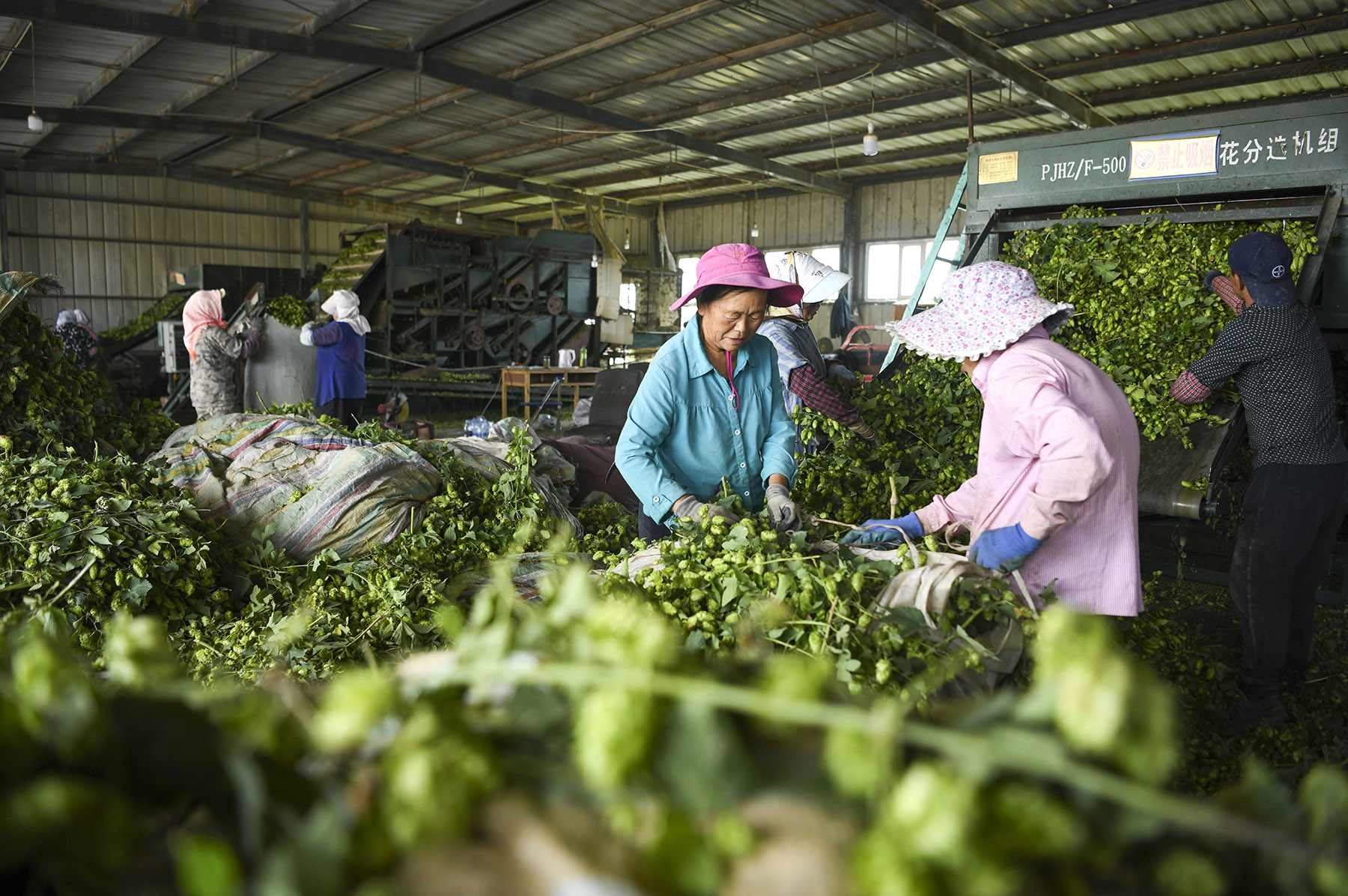
Seven pillars
Over the past 70 years, the scale of industrial production of the XPCC has expanded from initial domination by manual workshops to modern mechanized production.
Xinjiang focuses on seven major industries — green chemical production, cotton and textile apparel, new materials, new energy, equipment manufacturing, distinctive services, agricultural products, and deep processing.
In the vast Gobi Desert stand rows of tall wind turbines with huge rotating blades that belong to the Datang Santanghu Wind Farm in Xinxing city. In the wind farm's control center, electricity generation numbers can be seen constantly fluctuating on a large screen.
Jiang Na, who helps maintain operations, said the total installed capacity of the wind farm, with 250 wind turbines, is as high as 450,000 kilowatts.
The wind farm has an annual planned electricity generation of 930 million kilowatt-hours, with an expected annual addition of 440 million kilowatt-hours of green electricity, reducing carbon dioxide emissions by 475,000 metric tons.
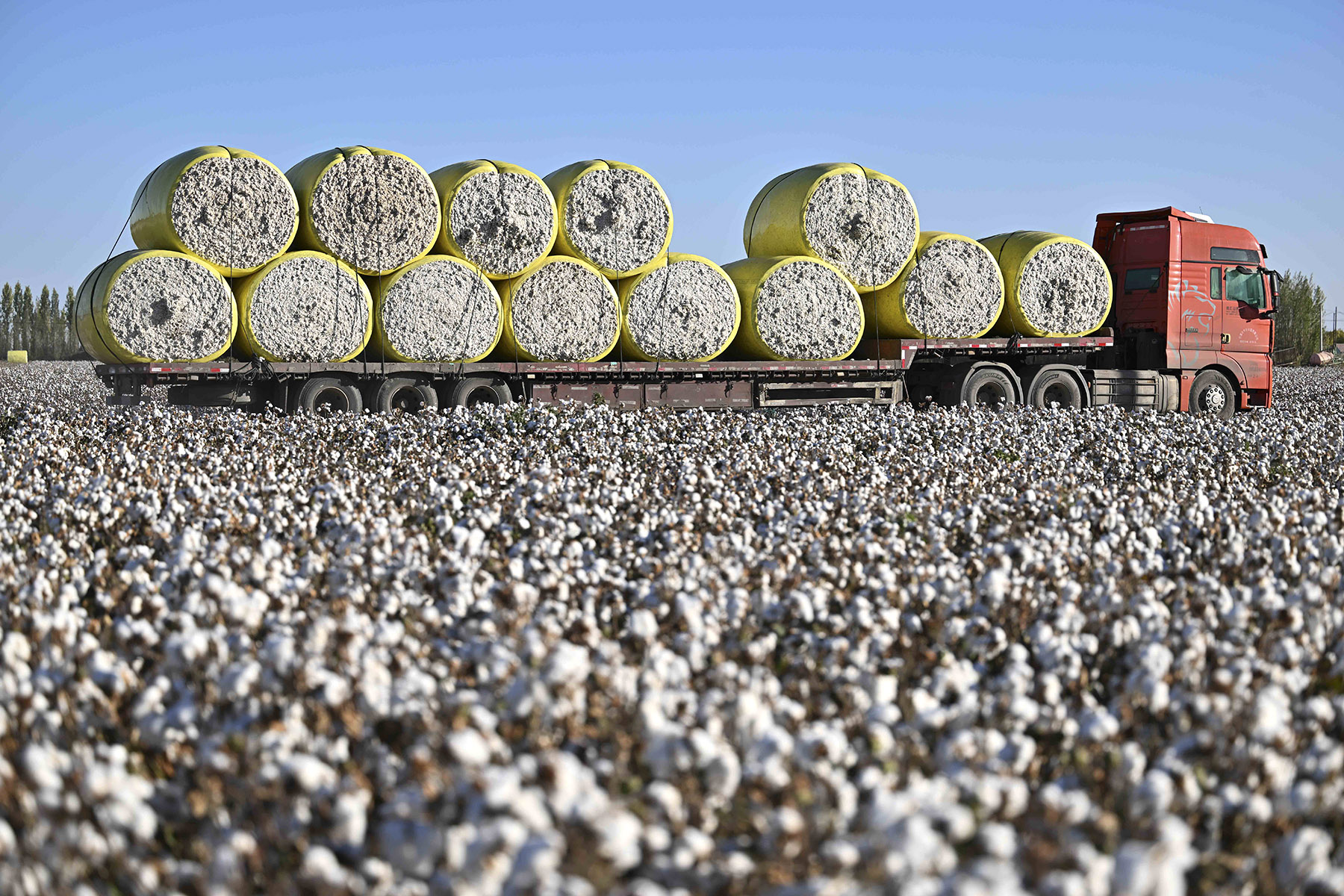
At the Huyanghe Economic and Technological Development Zone of Huyanghe city, the phase 1 production line for high-purity crystalline silicon, with an annual output of 50,000 tons, was put into operation in 2023.
"To build a modern factory in the desert, we feel proud," said Sun Chengliang, chairman of Xinjiang Jingnuo New Energy Industry Development, adding that the total amount of investment has reached 10 billion yuan.
In Shihezi, the "aviation town "has gathered a group of top enterprises and vocational colleges.
"In 2023, the Xinjiang aviation industry achieved its best-ever levels in terms of annual flight hours, operating revenue and operational efficiency," said Chen Bing, chairman of Xinjiang General Aviation Co.
Today, from aerial spreading of fertilizers and pesticides to aerial photography and surveying, emergency rescue operations, flight training, aircraft maintenance, and drone manufacturing, the XPCC's low-altitude economy is gaining momentum.
The added value of secondary industries involved in manufacturing and construction reached 140.224 billion yuan last year, an increase of 77.924 billion yuan compared with 2013, data from local authorities showed.
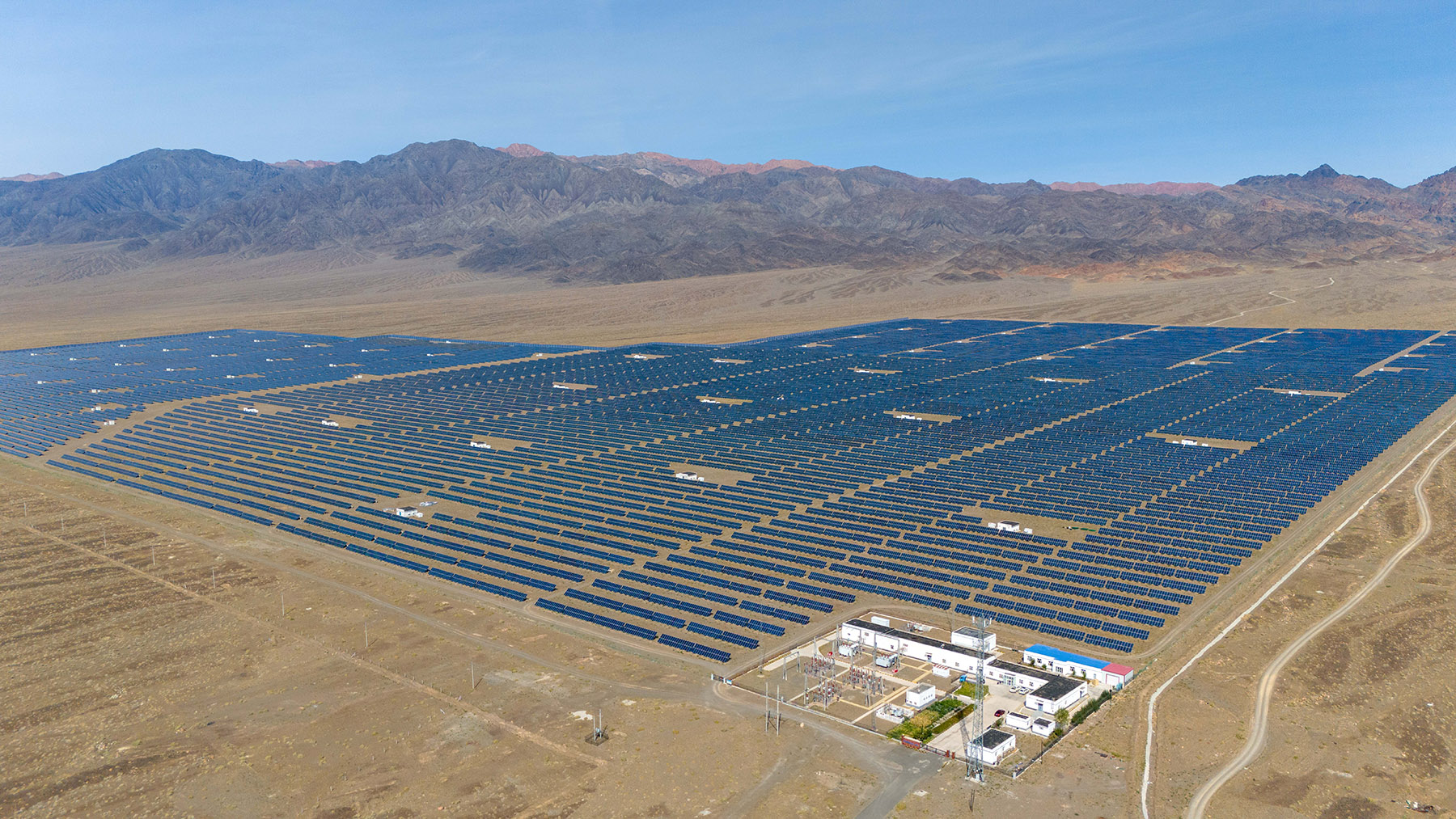
Green efforts
Over the decades, people have survived Xinjiang's harsh environment, with green change brought through the efforts of the corps.
During the National Day holiday, the unique scenery at Baisha Lake in Beitun city, featuring forests, lake and desert, attracted a large number of tourists. The tourist attraction, only several kilometers from the border, was once a barren desert wilderness.
By 2023, the urban green coverage rate in Beitun exceeded 41 percent, and in the built-up areas of various cities of the XPCC, the green area has reached nearly 10,000 hectares.
Transforming the barren deserts and wastelands into garden cities has brought opportunities for tourism.
Kunyu, located on the southern edge of the Taklimakan Desert, has average annual precipitation of only 34 millimeters, making its ecological environment extremely fragile.
Over the years, residents have accelerated greening efforts, built windbreaks, and planted vegetation to keep sand fixed in place. Every winter and spring, a large number of workers are organized to plant trees.
ALSO READ: Young people take reins of Kazak culture with pride
Since 2020, the corps has completed artificial afforestation of 17,700 mu, restoration and rectification of degraded forests covering an area of 22,044 mu, and restoration of 20,000 mu of degraded grasslands. Approximately 113 million yuan in total has been invested in afforestation projects.
With the increasing efforts in afforestation and ecological restoration, the landscape has been completely transformed. The forest coverage rate has reached 4.14 percent, and the green space in built-up areas has increased from 18 percent in 2017 to 40.21 percent today.
"During holidays, there are always a lot of tourists, and at peak times, we have to roast two or three sheep a day," said Mamatturdi Keram, who is a food seller at Kunlun Mountains scenic spot close to Kunyu.
He both herds and sells roasted meat. Mamatturdi said he can earn more than 30,000 yuan a year from selling roasted meat.
Xinhua News Agency contributed to this story.
Contact the writers at chenmeiling@chinadaily.com.cn


